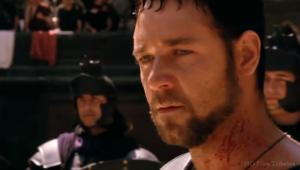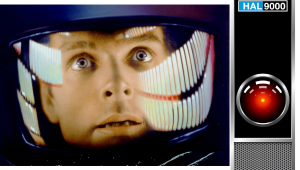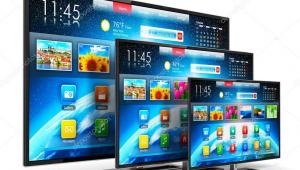Avengers: Infinity War-When Home Theater Trumps IMAX

As the story begins, Thanos has destroyed the ship carrying the Asgardians away from their home planet, which was itself destroyed in Thor: Ragnarok (try to keep up with the plot points from at least some of the previous 153 Marvel comic book moviesyou’ll be lost without them). Thor manages to escape, and the next hour or so is dedicated to getting our superheroes back together to fight the good fight. The roster includes what I would call the core four (at least among those for whom Disney owns the rights!): Iron Man, Thor, Captain America (sporting a totally desaturated costume, perhaps to avoid risking the now-lucrative Chinese market with the old red, white, and blue?), and Spider-Boy…er-Man.
Then there are the Guardians of the Galaxy, the Black Panther, and Dr. Strangea group pushing close to the core four mainly because they’ve all had their own successful movies. Finally we have the third stringers (Vision, Black Widow, Falcon, Scarlet Witch, and others I’ve probably missedthe Marvel world is awash with superheroes. Notably missing in action here was Ant-Man, perhaps because he could do it all himself by merely flying up Thanos’ nose and re-enlarging, making a mess and cutting the entire film down to under an hour and taking the Marvel box-office down with it.
In case you’re having trouble keeping all of these superheroes straight (and I wouldn’t blame you), the most significant superhero here is Thor. Sorry Iron Man and Spider-Man fans, but they’d be of little help without their nanotech armor suits and (in the later) spidey-sense. Captain America and Black Panther are fast and great mano-a-mano fighters, but take away their Accessories by Vibranium and where would they be? Dr. Strange does have the Time Stone and a neat way with flashy, bright red circles to fend off the bad guys and transport himself or them to other places when the going gets tough, but he can be tedious in large doses.
The Guardians don’t appear to have special powers particularly useful to the task here (though Gamora is key to the plot and Mantis can briefly put the most powerful of bad guys to sleep). Quill, while quick with a quip, manages (mini-spoiler #1) to send a near victory over Thanos into overtime, producing a cliffhanger ending and forcing us to wait another year before this final entry in the Marvel franchise (wanna bet?!) wraps up the story in a sequel.
But all Thor does here is expose himself to the full force of a reanimated star to re-forge his hammer (name another superhero who could do that and live). And later, in the third act, he makes the movie’s most spectacular entrance (and perhaps the most spectacular in the entire Marvel film franchise to date) flashing his thunder and lightning in full Dolby Atmos and HDR and (mini-spoiler #2) almost saves the day.
If all of this sounds like I didn’t like the movie , that’s anything but true. It’s also easy to make fun of the comic-book, superhero genre, and I’m more into science fiction (though anything close to true sci-fi has always been rare in Hollywood, where a new Star Trek script was reportedly rejected recently because it was too “Star-Treky).
When I first saw Avengers: Infinity War in my local IMAX theater I was underwhelmed... the movie worked far better for me at home in 4K and HDR.
When I first saw Avengers: Infinity War in my local (atypically lame) IMAX theater I was underwhelmed (in an overwhelmed sort of way). It’ was too long by a half hour, with the final battle in Wakanda running on forever. But the movie worked far better for me at home in 4K and HDR on an upcoming 2019 Sony projector (more on that in a future posting). Though the video transfer here is an upconversion from a 2K master and graded for HDR (typical of most UHD Blu-rays), on an 8-foot wide screen with a good, affordable home theater sound system from Paradigm (also under review) the experience was electric.The video was spectacularly good. Projectors can’t equal flat screen sets when it comes to HDR (as a quick look at some key scenes on a 65-inch LG OLED made crystal clear), and likely won’t until huge, micro LED or OLED displays become affordable. Don’t hold your breath. But apart from the fact that the projector’s blacks weren’t quite up to the very best I’ve seen from a relatively affordable projector, all of the film’s very dark scenes were handled beautifully (far better than in that IMAX presentationalas, I have no Dolby Cinema nearby). Brighter scenes were effective as well, and despite the fact that the projector had not yet been calibrated I had no serious quibbles with the color, though I did turn the Color control down from 50 to 45.
The sound was even more startling. It was a little lower in level than on most recent films, and its deep bass wasn’t as paint-peeling deep and powerful as titles such as Blade Runner 2049. But the former was easy to fix with a dB or two added to the volume control, and the latter wasn’t clearly missed. The obligatory explosions and other sound effects got the job done, and even at a high level were never ear-grating. But I care more about the dialogue, which was always intelligible, and the music. Alan Silvestri’s orchestral score was amazing. On more than one occasion I was blown away by the massive sound of the orchestra’s brass section. And thanks to the filmmakers’ for not plastering a lame pop song over the end credits in an attempt to sell albums, downloads, or win a “Best Song” Oscar.
And as in all Marvel movies wait for the end-tag following the closing credits, though this one was less of a tease than most.
Speaking of awards, the Academy has recently added a “Most Popular” category to its Oscars. That will presumably change the name of the current “Best Picture” award to “Movies That Were Not Popular.” The new category was clearly created to give an Oscar to Black Panther. Political Correctness aside, however, any such award should go to Avengers: Infinity War unless something better pops up before the end of the year.
Addendum (or Addendumb)
In my August 8th blog about Sony’s recent launch of its new Master Series televisions, I wrote, about a comparison of Sony’s new Z9F LED/LCD with Samsung’s current flagship, “The Z9D didn’t look obviously brighter overall…”
What I should have written was “The Z9F didn’t look obviously brighter than the Samsung overall…” Sorry for any confusion this might have caused. The older Sony Z9D was not involved in any comparison with the Z9F at the event Referencing it there was a typo.
The text of that blog has been amended to reflect this correction.





























































